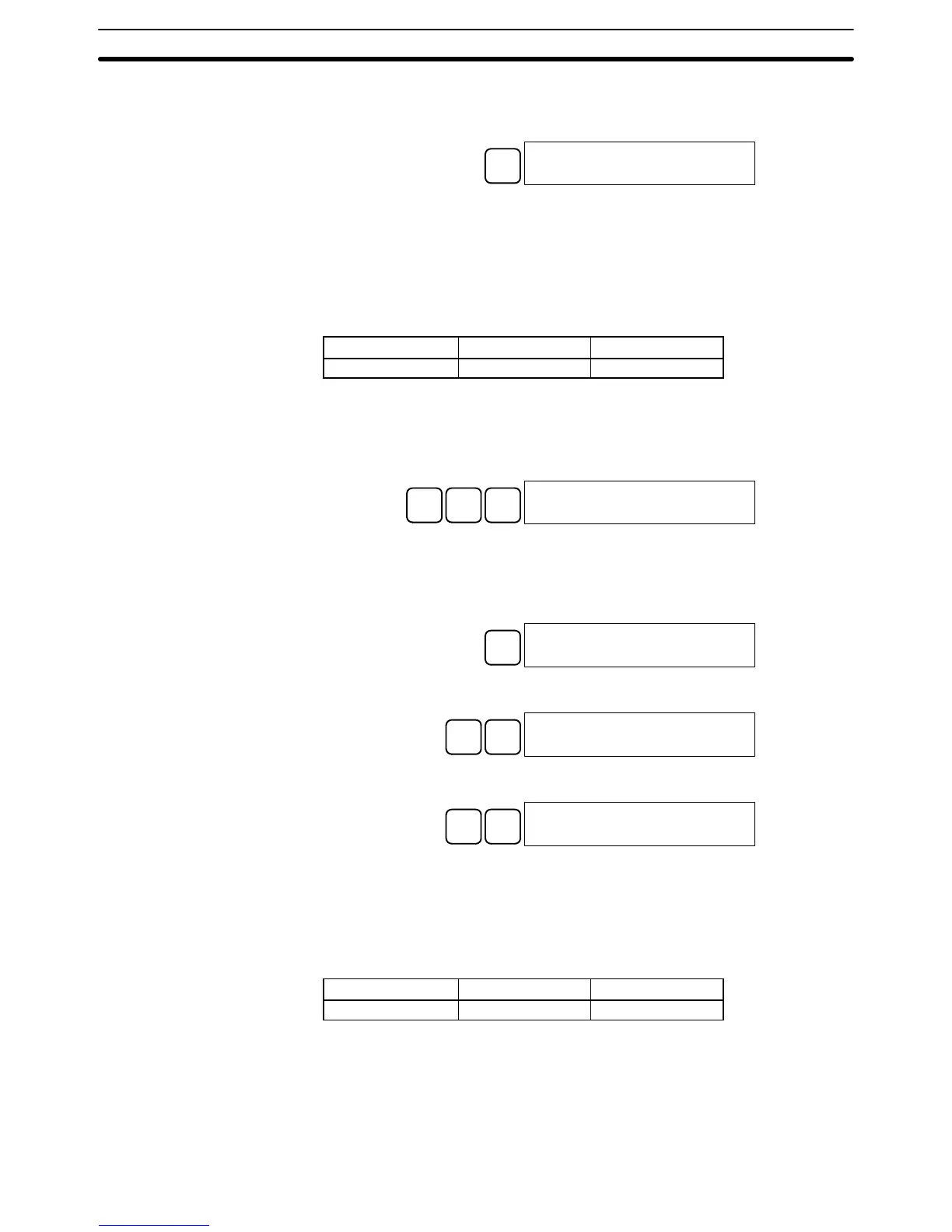3-6SectionProgramming Console Operations
90
4. When the desired instruction is displayed, press the WRITE Key to change
the function code assignment. The following display will appear if the
selected instruction has not been assigned to another function code.
WRITE
INST TBL READ
FUN18:HKY
Note It is not possible to change to an instruction which is already assigned
to a different function code.
3-6-6 Reading and Changing the Clock
This operation is used to read and change the clock in PCs that have a Memory
Cassette equipped with a clock. It is possible to read the clock in any mode, but
the clock can be changed in MONITOR or PROGRAM mode only.
RUN MONITOR PROGRAM
OK (reading only) OK OK
Reading the Clock Follow the procedure below to read the clock.
1, 2, 3...
1. Bring up the initial display.
2. Press the FUN, SHIFT, and then the MONTR Key. The current clock setting
will be displayed.
FUN
SHIFT
MONTR
TIM 93-03-17
10:56:36 TUE(2)
Changing the Clock Follow the procedure below to change the clock setting. The clock setting cannot
be changed in RUN mode.
1, 2, 3...
1. Follow the procedure above to display the current clock setting.
2. Press the CHG Key. The following display will appear.
CHG
TIM CHG?~3-03-17
10:57:00 TUE(2)
3. Use the Up and Down Arrow Keys to move the cursor to the unit that will be
changed. In this case, the day of the week is being changed.
↓
↑
TIM CHG?93-03-17
10:58:00 TUE(~)
4. Input the new value and press the WRITE Key. The new setting will appear
on the display.
D
3
WRITE
TIM 93-03-17
10:58:30 WED(3)
Note The days of the week correspond to the following numbers: Sun.=0,
Mon.=1, Tue.=2, Wed.=3, Thu.=4, Fri.=5, and Sat.=6.
3-6-7 Setting and Reading a Program Memory Address
This operation is used to display the specified program memory address and is
possible in any mode.
RUN MONITOR PROGRAM
OK OK OK
When inputting a program for the first time, it is generally written to Program
Memory starting from address 000. Because this address appears when the
display is cleared, it is not necessary to specify it.
When inputting a program starting from other than 000 or to read or modify a
program that already exists in memory, the desired address must be desig-
nated.
